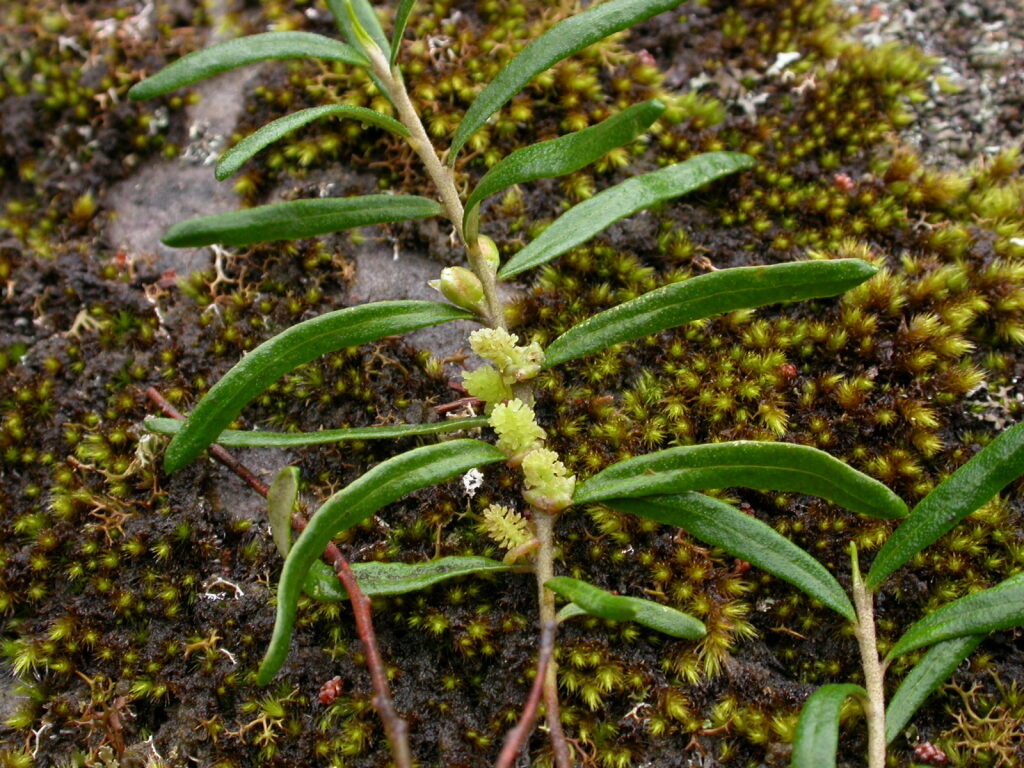Bertya grampiana
Halford & R.J.F.Hend.Erect shrub 2–4 m high; branchlets whitish-tomentose, becoming glabrous but tuberculate by persistent hair bases. Leaves linear to narrowly obvate, 19–39 mm long, 2.5–4.5 mm wide, apex acute to obtuse, base tapering into petiole, margins recurved, upper surface dark green and glabrous, lower surface paler with a velvety covering of stellate hairs; petiole 0.9–1.5 mm long. Flowers solitary, on peduncles 1–4 mm long; bracts 5–7, 1–3.5 mm long, glabrous to tomentose. Male flowers sessile or with pedicels to 0.5 mm long; perianth segments ovate, 4.5–5 mm long, glabrous. Female flowers with pedicels 0.3–1.1 mm long; perianth segments ovate or narrowly triangular, 2.8–3.2 mm long, glabrous; styles deeply 3- or 4-lobed. Capsule ovoid, 6.5–7.5 mm long, glabrous to sparsely stellate-hairy. Flowers mostly spring and summer.
GGr. Bertya grampiana is confined to the Billywing area of the western Grampians, where it grows in riparian areas.
 Spinning
SpinningHalford, D.A.; Henderson, R.J.F. (2002). Studies in Euphorbiaceae A.L.Juss. sens. lat. 3. A revision of Bertya Planch. (Ricinocarpeae Muell. Arg., Bertyinae Muell.Arg.). Austrobaileya 6(2): 187–245.

